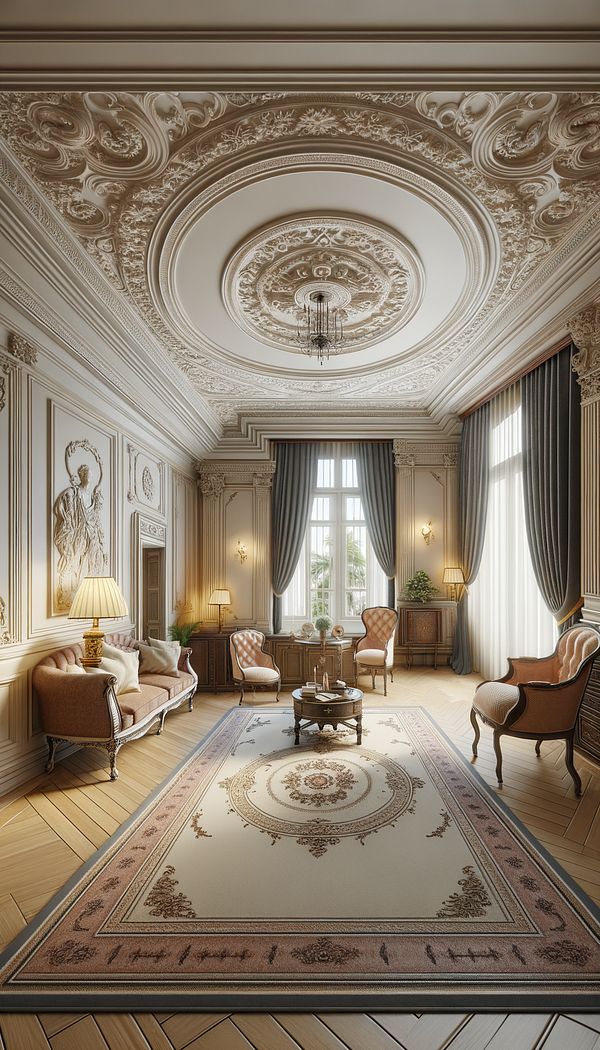What is Adam Style?
Adam Style refers to a neoclassical design movement originating in the 18th century.
Description
Adam Style denotes a distinctive neoclassical style that emerged in the mid-18th century, developed by three Scottish brothers: Robert, James, and William Adam. Their approach to design signified a move away from the heavier baroque influences of the time, favoring instead a lighter, more refined aesthetic. Characterized by its symmetrical layouts, delicate ornamentation, and integration of motifs from ancient Rome and Greece, Adam Style was applied across architecture, furniture, and interior decoration. Their work emphasized harmony, proportion, and unity, often incorporating a variety of decorative arts within a single design scheme to create cohesive interiors.
The Adam brothers were pioneers in integrating the design of a building with its interior, believing that all elements should work together in stylistic harmony. They introduced innovative design elements like the 'Adam ceiling,' featuring intricate plasterwork, and the use of pastel color palettes. Their designs often included classical elements such as urns, swags, medallions, and figures, blending these with contemporary Georgian tastes. Adam Style remains influential, revered for its elegance, lightness, and balanced proportions, continuing to inspire interior design and architecture to this day.
Usage
Adam Style can be seen in various historic homes, museums, and even contemporary homes seeking a classic aesthetic. It's recognized in the ornate plasterwork of ceilings, symmetrical room layouts, and furniture designs featuring classical motifs. This style often appears in spaces aiming for a refined, elegant look, incorporating antiques or reproductions in the decor.
FAQs
-
Who were the key figures behind Adam Style?
Adam Style was developed by Scottish brothers Robert, James, and William Adam, who were influential architects and designers in the 18th century.
-
How does Adam Style differ from Baroque?
Adam Style is lighter and more refined, focusing on symmetry, delicate ornamentation, and classical motifs, contrasting with the heavier and more opulent Baroque designs.
-
Is Adam Style applicable only to historic buildings?
No, Adam Style is appreciated in both historic and contemporary settings for those looking to incorporate elegance and classical design elements into their interiors.
Practical Application
To incorporate Adam Style into your own space, start by focusing on symmetry and classical motifs such as urns, medallions, and pastoral scenes. Utilize delicate color schemes, invest in furniture with light, elegant lines, and consider adding detailed plasterwork or moldings to ceilings or walls for an authentic touch. The key is to maintain a balance between decorative elements and the overall harmony of your space.
-
Architectural Elements199 articles
-
Design Styles478 articles
-
Furniture Types599 articles
-
Decorative Techniques322 articles
-
Historical Periods & Movements150 articles
-
Artisan StyleArtisan Style refers to a design aesthetic that emphasizes handcrafted elements and materials.
-
What-NotA what-not is a piece of furniture incorporating open shelves for the display of ornaments.
-
Built-inBuilt-in refers to any feature or piece of furniture that is permanently integrated into a room's structure.
-
Dado RailA dado rail is a horizontal strip of molding attached to a wall, typically around waist height.
-
Furniture DimensionsFurniture dimensions refer to the measurements of a piece of furniture, including the height, width, depth (or length), and sometimes weight.
